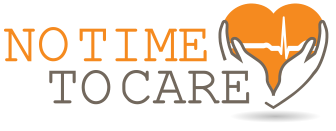Your cart is currently empty!

Overworked and Overwhelmed
The landscape of today’s healthcare environment is continuously changing. Healthcare institutions have been challenged to keep up with the changing demands of government regulatory policies, insurance company ultimatums, and, of course, the very knowledgeable and informed healthcare consumer. While good for the healthcare services consumer, this new complex healthcare environment has placed a significant burden on the bedside caregiver. Some estimate that it has tripled the amount of work that an RN needs to do in their 12-hour shift and for that reason nurses are leaving the profession.
Healthcare leaders throughout this country are asking the bedside caregiver to be accountable to the metrics and target goals needed to meet these additional requirements. Caregivers are overworked and overwhelmed, with many questioning why they stay in a business that does not value them for the compassionate care that they provide.
Patient satisfaction is the indirect measure of caregiver engagement. If caregivers are happy, if they truly love what they are doing, then they will WANT to be a contributing part of the group’s success. Without empowered, motivated, and engaged caregivers, the chances of reaching the required metrics is very unlikely.
There are three fundamental principles that leaders need to follow in order to care for the caregiver.
Create a culture of inclusivity. When you use motivation and empowerment as a way to engage caregivers, real culture change begins to become a possibility. Culture change is not marked by a single event, which makes it difficult to identify, but rather a series of small events that create the ultimate experience. The culture changes and people begin to believe in the system, practice the values, and hold each other accountable for the success of the unit.
When bedside caregivers feel valued and have a voice, they are more likely to commit to a vision. Begin the process with a unit-specific vision. Ask the caregivers to write down what they feel would make their unit a place where they would be proud to work. Collect these thoughts and then put them into categories and assign them a specific value. For example, someone may say that they want to be treated with respect regardless of their job title. This thought could be categorized as Respect. After collecting everyone’s thoughts, put them on a poster board for all to see. Ask the caregivers to commit to the unit vision and ask them to sign the commitment board. Accountability begins.
Constant communication. Leaders must find effective ways to communicate with caregivers to maintain a sense of engagement. A mistake that many leaders make is solely relying on a monthly staff meeting to communicate. At the average monthly staff meeting, caregivers often receive outdated information, and that’s if they even attend the meeting. Relying on caregivers to read the meeting minutes just doesn’t work.
Instead of staff meetings, try a huggle—a quick, 5-minute daily huddle with a positive message at the end to start the shift off on the right foot. In the Emergency Department the first huggle of the day is at 9 a.m., then repeated at 11 a.m. when more caregivers arrive and then again at 7 p.m. for the night shift (of course this could change based on unit-specific staffing patterns).
The huggle begins with the immediate news of the day. This usually consists of what staffing looks like, reminders of current initiatives that have been implemented, and an opportunity to discuss any rumors that need to be dispelled.
The huggle always ends on the positive. For example, an ER Tech gave out Hershey’s Kisses to each member of the team stating “since you all provided such wonderful care to my mother when she was a patient this weekend, I would like to give you all a kiss!” Another great example of a positive end to the huggle was ER bingo. A nurse created game cards for everyone on the day shift where each card included tasks to achieve like “placed my 5th IV” or “gave a warm blanket to a cold family member.” The first caregiver to fill their card won the prize.
Creatively Celebrate Success. Positive acknowledgement reinforces positive behavior, which makes it more likely that the behavior will be repeated in the future. It is the fuel of culture change, and without it the quest for real culture change will surely fail. Any reward program can be successful if you tap into the creativity and imagination of the caregivers. Finding fun ways to celebrate daily achievements with a simple gesture is a great way to foster team building while achieving the goals set for the department, especially if they are caregiver-inspired, sustainable, and inexpensive to implement.
When looking for a way to improve these types of programs, a leader should look no further than the staff who participates in them. Engaged and empowered caregivers will often step up and surprise with suggestions that are creative and fun. If caregivers are a part of the creation and implementation of such programs they are more likely to be invested in seeing that they are successful. Traditional celebrations like sunshine clubs and the always popular “whose baby picture is this” contest have been done but participation is often limited due to the lack of creativity.
Given the task of finding ways to spice up these programs, caregivers often find creative ways to do so. For example, a great improvement to an old program happened when the committee changed the rules of the sunshine club. Instead of tracking down people for their monthly dues they decided to entice people to give them their money by giving them something in return. Noticing that the vending machine charged $1.10 cents for a candy bar, the committee decided to purchase their own and sell them for a dollar. Word spread and before they knew it the entire hospital was buying candy from them. The profits were used to help fellow caregivers in need. A wonderful program created by caregivers to benefit caregivers.
In any hospital setting, a team of enthusiastic and engaged caregivers translates into better patient outcomes. Evidence shows that over 40% of a caregiver’s time is spent somewhere other than the bedside, ultimately leaving the bedside caregiver with No Time to Care! These are just a few ideas amongst the thousands of best practices implemented in well-performing organizations throughout the United States. I am always amazed at the creativity and enthusiasm that caregivers will give you if you just give them the chance. Energize, Empower, and Engage bedside caregivers and wonderful things will happen.
Caregivers are overworked and overwhelmed, with many questioning why they stay in a business that does not value them for the compassionate care that they provide.
I am always amazed at the creativity and enthusiasm that caregivers will give you if you just give them the chance. Energize, Empower, and Engage bedside caregivers and wonderful things will happen.



